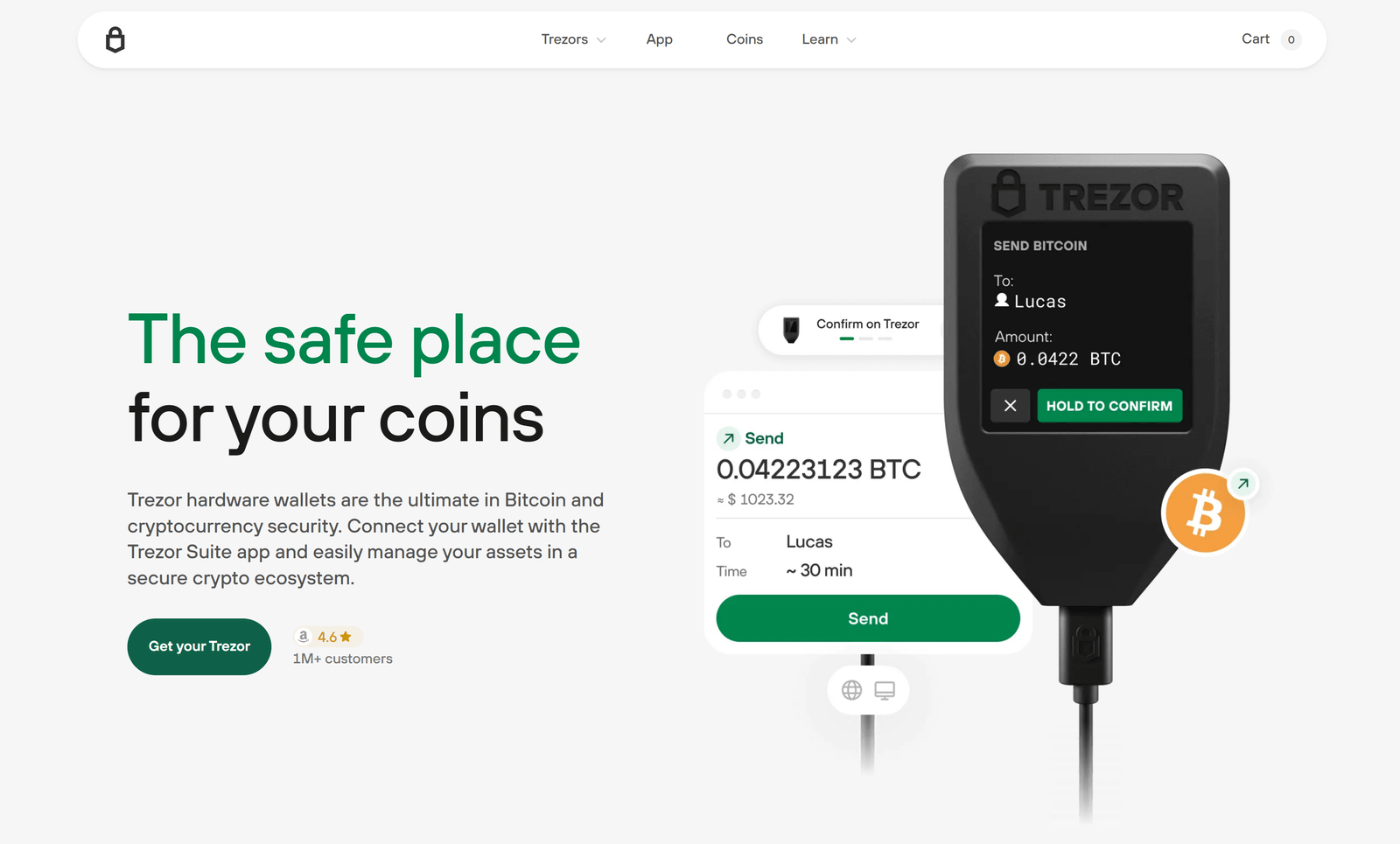Trezor.io/Start – Official Hardware Wallet Setup Guide
Welcome to Trezor.io Start, the official setup process for your Trezor hardware wallet. This guide walks you through each step of initializing your device securely—installing verified firmware, setting a personal PIN, and recording your recovery seed. Every stage is handled directly on your hardware wallet, ensuring complete protection of your private keys.
1. Understanding the Purpose of Trezor.io Start
The Trezor.io Start process ensures that your wallet begins in a trusted, verified state. It confirms the device’s authenticity, installs official firmware, and prepares your wallet for secure use. No personal or private data ever leaves your Trezor hardware wallet during setup.
2. Verify Packaging and Device Integrity
Check the device box for its original seal. Genuine Trezor products are packaged securely and should show no signs of tampering. If you notice broken seals or evidence of prior use, do not proceed until authenticity is confirmed.
3. Connect Your Hardware Wallet
Use the original USB cable to connect your Trezor to your computer. Once powered, the device screen will display startup prompts. Follow the instructions shown on the hardware wallet display itself—this ensures you only act on verified, safe prompts.
4. Install Verified Firmware
Your wallet will prompt you to install official, signed firmware. This firmware is digitally verified to protect you from tampered versions. The Trezor device validates each update automatically and will reject any unverified installation.
5. Create a New Wallet
After firmware installation, select “Create a New Wallet.” The wallet generates a cryptographic master seed directly within the secure chip, never exposing it externally. This ensures that your keys remain entirely offline and under your personal control.
6. Record Your Recovery Seed
The recovery seed is your only backup. Write down each word exactly as it appears on your Trezor display. Keep this written seed offline and private—never photograph, type, or store it digitally. Your recovery seed restores your wallet if the device is lost, stolen, or damaged.
7. Set a Strong PIN
Choose a secure PIN directly on your Trezor device. The PIN adds an essential layer of protection against unauthorized access. Repeated incorrect attempts will cause time delays, effectively deterring brute-force entry attempts.
8. Optional: Add a Passphrase
Advanced users may enable a passphrase—a customizable word or phrase added to the recovery seed. The passphrase functions as an additional encryption layer, protecting hidden wallets for enhanced privacy.
9. Confirm Firmware Authenticity
Each time your Trezor starts, it automatically checks the firmware signature. If the firmware is not official, the device will alert you immediately. Proceed only when the verification confirms authenticity.
10. How Trezor Protects Your Private Keys
All sensitive operations take place within the secure hardware environment. Private keys never leave your Trezor wallet. Even when connected to an online computer, your cryptographic data remains fully isolated and offline.
11. Transaction Verification
When sending funds, review transaction details on the Trezor screen before confirming. Only approve a transaction when both the amount and destination address match your intended action. Physical confirmation prevents unauthorized transfers.
12. Firmware Maintenance
Periodic firmware updates enhance security and performance. Updates are signed and verified to ensure authenticity. During firmware updates, your wallet’s private data remains completely protected.
13. Backup and Long-Term Storage
Store your recovery seed securely—ideally in multiple physical locations. Consider using fireproof or metal backup plates for long-term resilience. Never upload or digitize your recovery information under any circumstance.
14. Security Guidelines
- Never share your recovery seed, PIN, or passphrase.
- Verify all addresses on your device display before sending transactions.
- Use your hardware wallet only with trusted computers.
- Check for firmware authenticity regularly.
- Keep your wallet and backup physically secure.
15. Troubleshooting Setup Issues
If your computer fails to detect the device, reconnect directly to a USB port, avoiding hubs or adapters. Restart both the device and computer if the issue continues. If unusual prompts appear, stop immediately and restart setup.
